Generative Artificial Intelligence (AI) is reshaping creativity as we know it. From art and music to film, fashion, and writing, AI tools can now generate original content that rivals human creativity. What began as experimental technology has evolved into a full-scale creative revolution, enabling artists, designers, and storytellers to explore entirely new possibilities.
Table of Contents
What Is Generative AI?
Generative AI refers to algorithms capable of creating new data such as images, videos, text, or audio based on the patterns they learn from existing data. These systems use deep learning and neural networks to analyze billions of examples and then produce original outputs that mimic or enhance human creativity.
Popular examples include:
- ChatGPT by OpenAI for text generation.
- DALL·E and Midjourney for digital art and illustration.
- Runway ML and Synthesia for video creation.
- Suno AI and AIVA for music composition.
These tools are democratizing creative work — allowing anyone, regardless of technical skill, to bring ideas to life.
The Rise of AI-Generated Art and Design
Digital artists now use AI as a co-creator rather than a competitor. Platforms like Midjourney, Stable Diffusion, and Adobe Firefly allow creators to generate stunning visuals in seconds. By simply entering a text prompt — such as “a futuristic city at sunset in cyberpunk style” — artists can produce high-resolution imagery that once required hours of manual design.
Fashion designers and architects also use AI for rapid prototyping. Algorithms can analyze trends, suggest patterns, and visualize designs in 3D before production begins. This drastically reduces costs and environmental waste. For inspiration and tutorials, visit Hugging Face Spaces where creators share open-source generative models.
Revolutionizing Film and Animation
The film industry is witnessing one of the biggest transformations thanks to generative AI. Scriptwriters use AI to brainstorm dialogue, generate storylines, and test plot variations. Visual effects (VFX) studios employ AI to automate scene rendering, background generation, and lip synchronization.
Tools like Runway Gen-2 can turn text prompts into short video clips, while Pika Labs and Kaiber AI generate animations from still images. Independent filmmakers now have access to cinematic capabilities once limited to big studios.
Streaming platforms are also experimenting with AI-generated trailers and personalized storylines. For example, Netflix has explored using AI to recommend not just content but also customized scenes for different audience segments a glimpse into the future of personalized storytelling.
AI in Music and Audio Creation
Generative AI has revolutionized how music is composed, produced, and distributed. Tools such as Suno AI, AIVA, and Soundful can compose full instrumental tracks in various genres from classical symphonies to EDM beats based on user prompts.
Musicians use these systems to generate melodies, background harmonies, or even lyrics. For example, Google’s Magenta Project provides open-source models for creative coders to build new sound experiences.
Writing and Content Creation with AI
Writers, marketers, and journalists are increasingly using AI to enhance productivity. Generative models like ChatGPT, Jasper, and Copy.ai can draft blog posts, advertisements, or even full novels. Rather than replacing writers, these tools act as creative assistants that help overcome writer’s block, suggest new ideas, and improve linguistic accuracy.
Media outlets now use AI to automate report generation for financial summaries or sports updates, while creative writers employ it for world-building and character development. A growing number of publishing platforms, including Medium and Substack, now allow AI-assisted workflows.
Generative AI in Gaming and Virtual Worlds
Game development has embraced AI to create dynamic environments, procedural content, and intelligent NPCs (non-player characters). Developers use generative models to design terrain, storylines, and visual assets automatically.
AI tools like Scenario GG and Leonardo AI allow game artists to generate high-quality concept art and textures instantly. Meanwhile, Unity and Unreal Engine are integrating AI features to accelerate level design and storytelling.
Ethical and Legal Challenges
While generative AI is transforming creativity, it also raises questions about authorship, copyright, and originality. Who owns AI-generated art the creator, the model, or the dataset owner? Legal systems are still adapting to define intellectual property boundaries in this new domain.
There are also concerns about bias in training data, deepfakes, and misinformation. Ethical AI development requires transparency, responsible use, and respect for existing artists’ rights. Organizations like UNESCO and the World Intellectual Property Organization (WIPO) are actively drafting policies to address these issues.
The Collaboration Between Humans and AI
Rather than replacing creative professionals, AI is best seen as a collaborative partner. Artists provide vision, emotion, and cultural context, while AI handles technical execution and idea generation. This synergy leads to faster workflows and innovative outcomes that were once unimaginable.
Educators and creative institutions are beginning to integrate AI literacy into art and design programs, ensuring that the next generation of creators can harness this technology responsibly.
Future of Generative AI in Creativity
The future of generative AI lies in personalization and co-creation. As models become more sophisticated, they will learn individual user preferences, style, and tone offering tailor-made outputs for every creator.
Soon, filmmakers will produce AI-assisted movies, musicians will perform with AI orchestras, and writers will craft interactive, evolving narratives with real-time audience input. The creative industry is entering an era where imagination is limited only by human curiosity.
Final Thoughts
Generative AI is not replacing creativity; it is redefining it. By automating technical tasks and expanding imaginative possibilities, AI empowers individuals to create faster, experiment more freely, and innovate beyond traditional boundaries.
From digital art to cinematic storytelling, AI is the most significant creative tool of the 21st century one that blends human emotion with computational intelligence. As long as creators use it ethically and thoughtfully, generative AI will continue to shape a vibrant and inclusive future for the global creative community.
For further exploration, check resources like OpenAI’s Research Blog and Adobe Firefly Learning Hub to see how leading innovators are pushing the boundaries of creative technology.
Also Check The Role of Artificial Intelligence in Ultimate Sustainable Development – Guide 2025

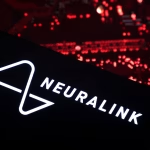

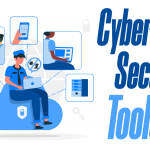


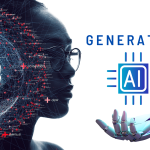
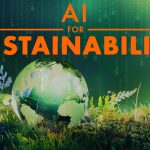

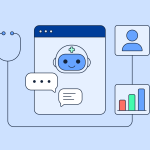
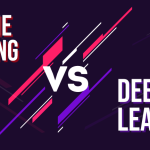
1 thought on “How Generative AI Is Transforming the Creative Industry 2025”